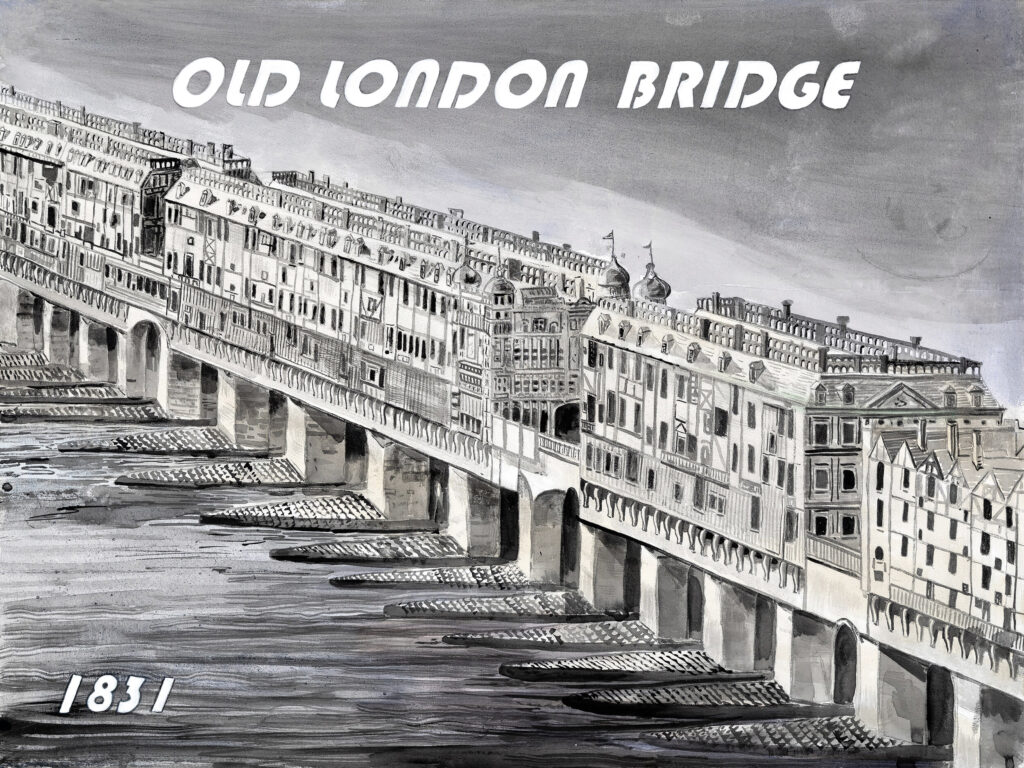London, England, UK
Demolished 1831

Requested by Chole-May B.
After the murder of Thomas Becket, Archbishop of Canterbury, King Henry II commissioned a new stone replacement bridge with a church in the middle dedicated to Becket. Building work began in 1176 and finished in 1209. The exorbitant cost was subsidized by taxes on wool. In 1284, the City of London acquired the charter for the maintenance for the bridge. The bridge was 26 feet (8 m) wide and was supported by 19 irregularly spaced arches set into the riverbed. It had a drawbridge to allow for the passage of tall ships. The bridge was crowded with shops which increased to over 200 in number by the Tudor period, with some of them 7 stories high, including Nonesuch House. The buildings led to numerous fires and increased the load on the bridge to unsustainable levels. After over 550 years of habitation, the last house was demolished in 1792 in a final attempt at repair, but these efforts proved unsuccessful and in 1799, a competition was opened to design a replacement for the medieval bridge and a design by John Rennie was chosen. The bridge was demolished in 1831 after over 600 years of use. The painting is based on an old uncredited print.
No. 94